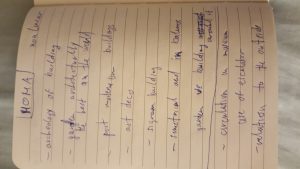Aleksandar Dekic: MOMA as a New York City Cultural Institution
Museum of Modern Art is a unique institution which celebrates new and inventive art. Even though it is called the Museum of Modern Art, its collection is mostly more than 100 years old which puts it in a way of an older historical institution. The architecture of the building itself is interesting as much as it is its collection. The building is a grouping of series of periods of construction, with the most recent just completed. It also has two rooms with the architectural collection, one is called architecture systems, and the other one is called the architecture of modern art. This is not my first time to visit this place, but I was again surprised by what it can offer to one visitor.
When we enter the building, there was the main hall with its open space and high ceiling which extends in some parts to the 3rd or 4th floor. Annoying sound from the ceiling, which fills the room from time to time, shows us the great acoustics of the place which would be perfect for the concerts. The main steps are designed in a way that visitors can enjoy in the movement of another visitor, which made human movement in the space an inevitable part of the building. The building will be incomplete without human movement. The same thing we saw when we visited the Guggenheim museum. During my visit, one of our colleges takes a picture of me from the 4th floor while we were on the 2nd floor watching the live performance happening with people in black clothes moving temporary sculptures on the wheels around, as a part of a performance. We were hypnotized with the performance, eager to find out why there are doing that, and what will happen at the end, not knowing that we have been part of somebody’s bigger picture of that same performance, but just from the different angle.
The special place in this institution is the garden. It represents the museum for itself in 2 ways. First, the dynamic and symmetry of the garden are totally in coherence with the museum building that surrounds it. The pool in the garden, together with the sculptures in it, are symbiotic with the architecture of the building, with the seatback on in, and with the transparent glass façade on the ground floor which makes the garden looks bigger like it extends into the buildings hall. The colors that dominate in the garden are white (Granite white), green and black (sculptures) and are compatible with the building on all three sides. And, probably the most iconic thing that makes this garden unique and, some would say the best in the world, are the buildings that surround this area. It is sort of museum or collection in open, with all this building from different periods, and different architectural styles that have a relation with each other and reflects this garden. Here we can see archeology of buildings like postmodernism buildings (ATT building), or art deco buildings or something that looks like Lever Building or another building that has taken the inspiration from the Seagram Building.
It was an amazing experience today to visit this cultural institution and with the help of Professor Montgomery, to see it with the different sets of eyes. To see this “garden museum” which today modern architects are taking into calculation whenever they plan to build some building that is visible from this location. It produces some sort of awe into me, knowing that this garden stands as an architectural angel guardian for the future preservation of everything that is artistically and architecturally important for the “soul” of this city.





Recent Comments